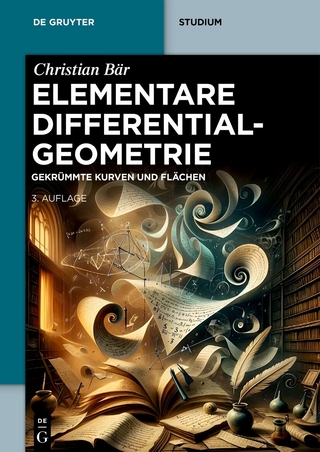
The Geometric Vein
Springer-Verlag New York Inc.
978-1-4612-5650-2 (ISBN)
Geometry has been defined as that part of mathematics which makes appeal to the sense of sight; but this definition is thrown in doubt by the existence of great geometers who were blind or nearly so, such as Leonhard Euler. Sometimes it seems that geometric methods in analysis, so-called, consist in having recourse to notions outside those apparently relevant, so that geometry must be the joining of unlike strands; but then what shall we say of the importance of axiomatic programmes in geometry, where reference to notions outside a restricted reper tory is banned? Whatever its definition, geometry clearly has been more than the sum of its results, more than the consequences of some few axiom sets. It has been a major current in mathematics, with a distinctive approach and a distinc ti v e spirit. A current, furthermore, which has not been constant. In the 1930s, after a period of pervasive prominence, it appeared to be in decline, even passe. These same years were those in which H. S. M. Coxeter was beginning his scientific work. Undeterred by the unfashionability of geometry, Coxeter pursued it with devotion and inspiration. By the 1950s he appeared to the broader mathematical world as a consummate practitioner of a peculiar, out-of-the-way art. Today there is no longer anything that out-of-the-way about it. Coxeter has contributed to, exemplified, we could almost say presided over an unanticipated and dra matic revival of geometry.
H. S. M. Coxeter: Published Works.- I: Polytopes and Honeycombs.- Uniform Tilings with Hollow Tiles.- Spherical Tilings with Transitivity Properties.- Some Isonemal Fabrics on Polyhedral Surfaces.- Convex Bodies which Tile Space.- Geometry of Radix Representations.- Embeddability of Regular Polytopes and Honeycombs in Hypercubes.- The Derivation of Schoenberg’s Star-Polytopes from Schoute’s Simplex Nets.- The Harmonic Analysis of Skew Polygons as a Source of Outdoor Sculptures.- The Geometry of African Art III. The Smoking Pipes of Begho.- Crystallography and Cremona Transformations.- Cubature Formulae, Polytopes, and Spherical Designs.- Two Quaternionic 4-Polytopes.- Span-Symmetric Generalized Quadrangles.- On Coxeter’s Loxodromic Sequences of Tangent Spheres.- II: Extremal Problems.- Elementary Geometry, Then and Now.- Some Researches Inspired by H. S. M. Coxeter.- Some Problems in the Geometry of Convex Bodies.- On an Analog to Minkowski’s Lattice Point Theorem.- Intersections of Convex Bodies with Their Translates.- An Extremal Property of Plane Convex Curves— P. Ungar’s Conjecture.- III: Geometric Transformations.- Polygons and Polynomials.- Algebraic Surfaces with Hyperelliptic Sections.- On the Circular Transformations of Möbius, Laguerre, and Lie.- The Geometry of Cycles, and Generalized Laguerre Inversion.- Inversive Geometry.- Absolute Polarities and Central Inversions.- Products of Axial Affinities and Products of Central Collineations.- Normal Forms of Isometries.- Finite Geometries with Simple, Semisimple, and Quasisimple Fundamental Groups.- Motions in a Finite Hyperbolic Plane.- IV: Groups and Presentations of Groups.- Generation of Linear Groups.- On Covering Klein’s Curve and Generating Projective Groups.- A Local Approach to Buildings.-Representations and Coxeter Graphs.- Coinvariant Theory of a Coxeter Group.- Two-Generator Two-Relation Presentations for Special Linear Groups.- Groups Related to Fa,b,c Involving Fibonacci Numbers.- V: The Combinatorial Side.- Convex Polyhedra.- Non-Hamilton Fundamental Cycle Graphs.- Some Combinatorial Identities.- Binary Views of Ternary Codes.
| Zusatzinfo | 598 p. |
|---|---|
| Verlagsort | New York, NY |
| Sprache | englisch |
| Maße | 155 x 235 mm |
| Themenwelt | Mathematik / Informatik ► Mathematik ► Geometrie / Topologie |
| ISBN-10 | 1-4612-5650-X / 146125650X |
| ISBN-13 | 978-1-4612-5650-2 / 9781461256502 |
| Zustand | Neuware |
| Haben Sie eine Frage zum Produkt? |
aus dem Bereich


